Your cart is currently empty!
Restoration Process
FREIGHT AND MOVING
We arrange to have your piano transported to our shop in Salt Lake using only industry-proven professional movers who are insured and experienced in handling these instruments. We are able to get your piano to our workbench with little to no hassle.
FIRST STEPS
We carefully assess the current state of your instrument and discuss with you any additional recommendations or considerations. Once all the details are confirmed, we begin the process of part orders and disassembly, uncovering years of history in your piano and preparing it for repairs that will last for years to come!

Old Pinblock Removed
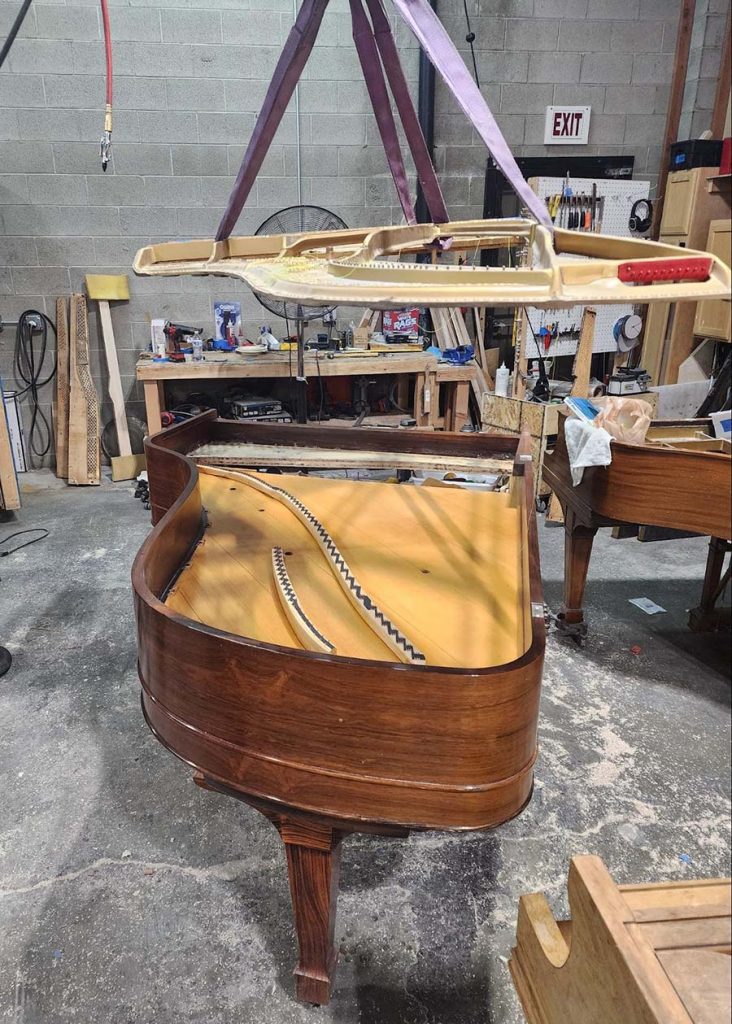
Sound-plate Lited

BELLY WORK
We begin by taking necessary measurements and replacing the pinblock, soundboard and bridges. These components together with the new strings make up what is called “the belly” of the piano. This is one of the most crucial steps as the piano’s belly setup is in effect the “soul” of your piano. The pinblock ensures that the tuning pins will be tight and hold their tuning well. The soundboard and bridges transfer, radiate, amplify, and sustain the tone of the strings. The new strings and associated hardware help the strings to vibrate longer with less impedance from dirt and corrosion. Clean termination points give the notes a clear sound and true tone.
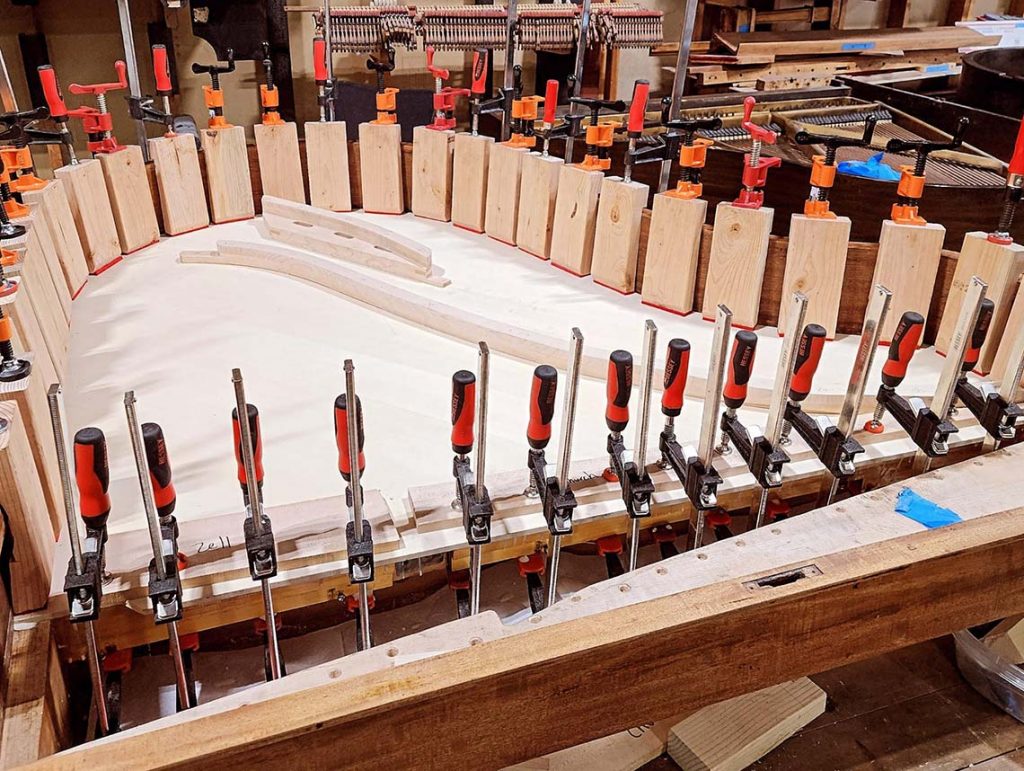

REFINISHING
What’s left of the old finish on your piano is stripped off. Then we meticulously repair, fill, sand and prep the surfaces to receive a new finish. The hardware is either replated or polished, and the new finish is polished to the desired finish type.
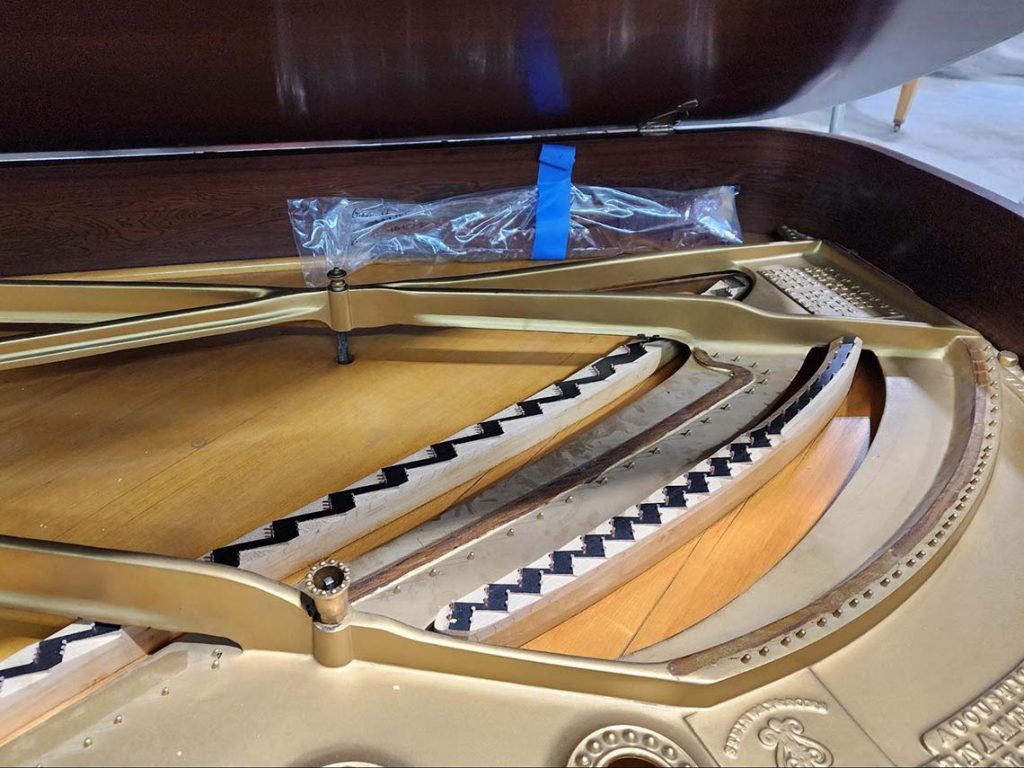

ACTION WORK
The action provides much of the expression, articulation, power and agility to your music. Replacing the parts with new parts allows for freedom of movement, proper weighting, and proper adjustment of the touch and tone. New felt and synthetic leather components restore the original or optimal geometry to the action making it an effective interface of communication for the pianist.
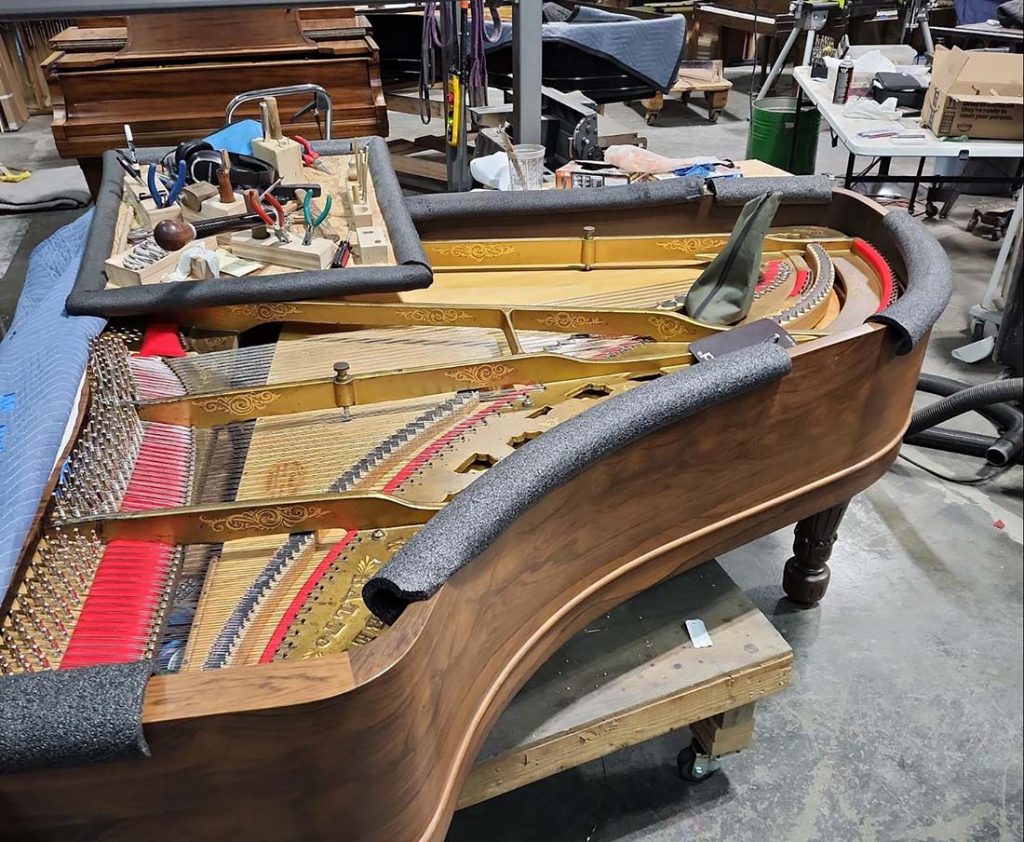

BACK ACTION
The back action is the mechanism that stops the sound when desired and also allows the strings to vibrate longer with use of the pedals. New felt is necessary to mate perfectly with the new strings and eliminate extraneous noise.

FINE TUNING and VOICING
After the action and back action are installed, the piano can then be fine-tuned. The strings have already been tuned several times as part of the stringing process. The strings will stretch out and settle over a period of 2-3 years, but with regular tuning and maintenance, they will stabilize and hold a tuning very well. The “Voicing” of the piano refers to shaping, hardening and softening the felt on the hammers which strike the strings to get a consistent tone across the scale and registers of the instrument, and to give the piano a “character” of relative mellow or bright tone.
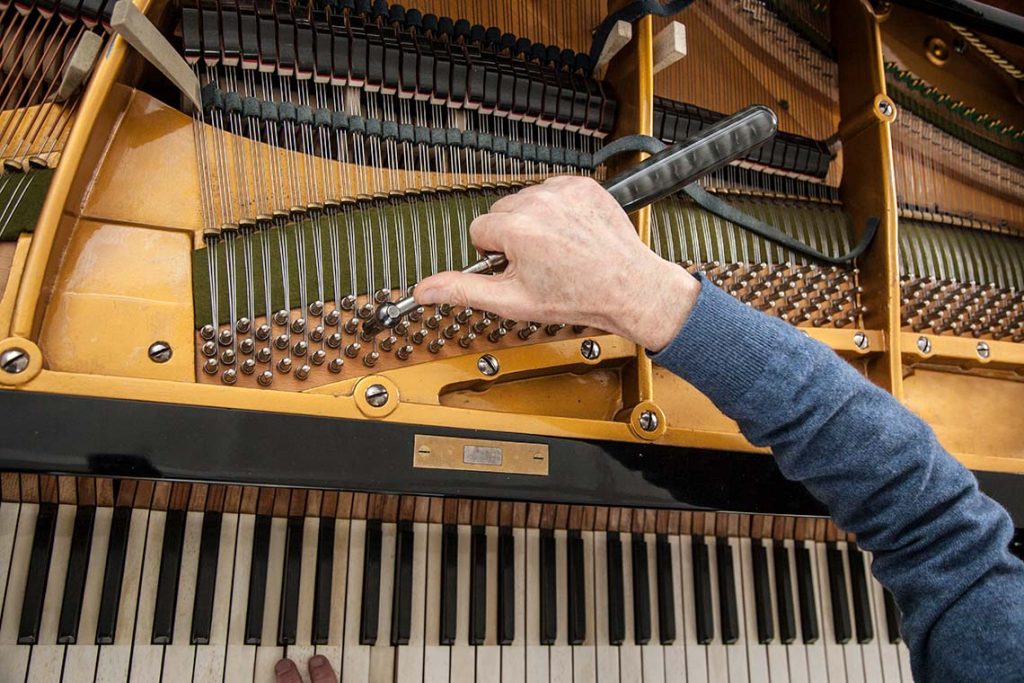

RE-ASSEMBLY
After the piano parts are all installed, aligned, regulated, and voiced, the piano is ready to receive a final assembly and cleaning. The piano will be tuned throughout this process and before leaving the shop so that it arrives to you ready to make music and receive further care from your home technician. Local customers may schedule maintenance with us which is recommended to keep the piano performing at its best.
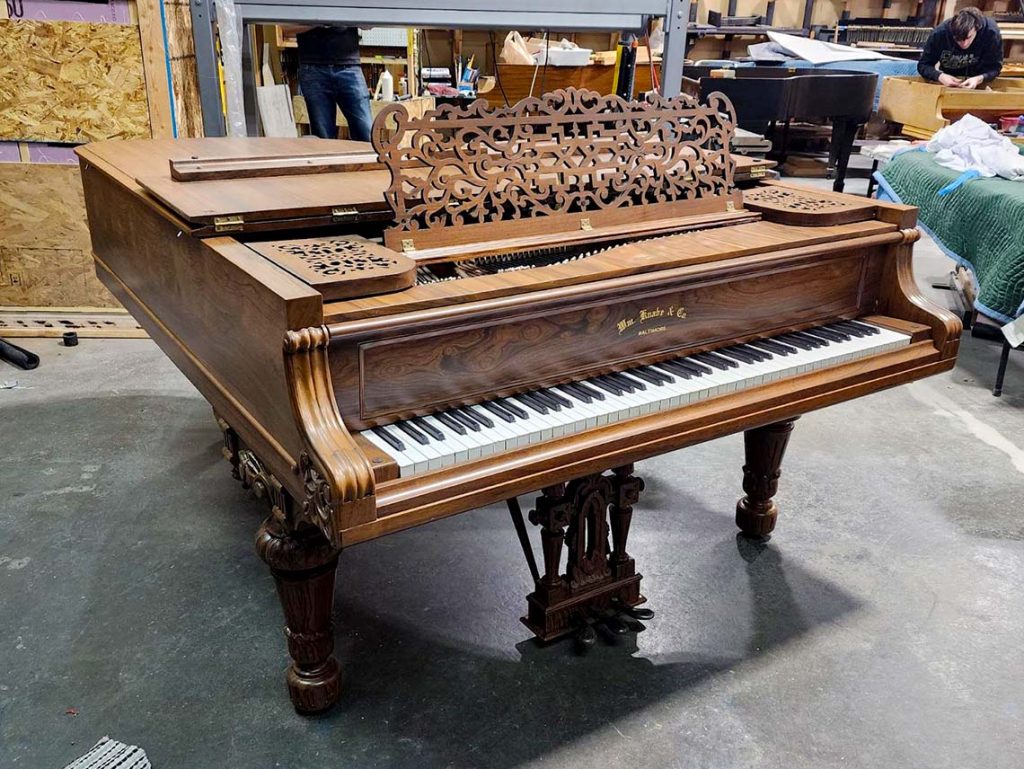

INITIAL BREAK-IN AND SETTLING
Pianos are different from most other new products in that they need more frequent maintenance at the very start of their lives. Strings stretch out, felts get compressed and change shape, and the wood and hardware respond to the climate of your home after being in production. A little diligence and patience here will pay off though as your instrument continues to blossom over the next couple years and solidifies and becomes a beautifully stable instrument.
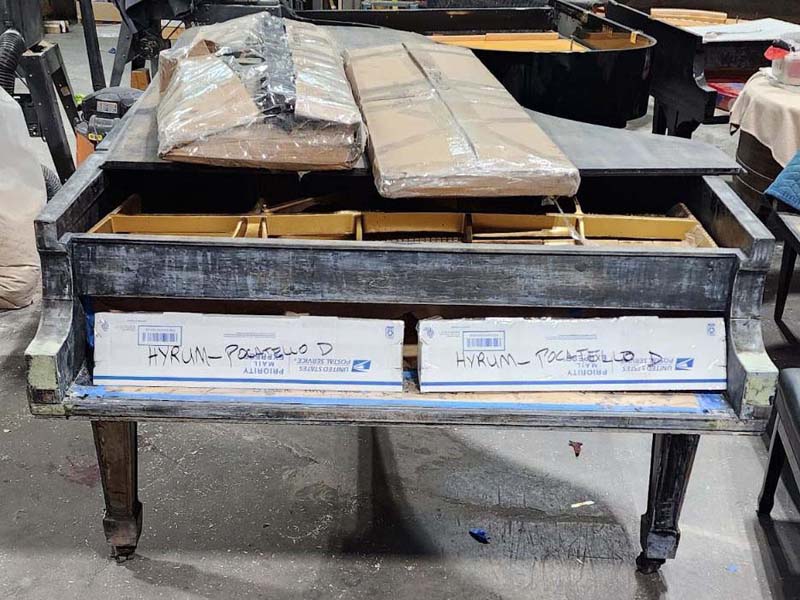
Before – Steinway Model O
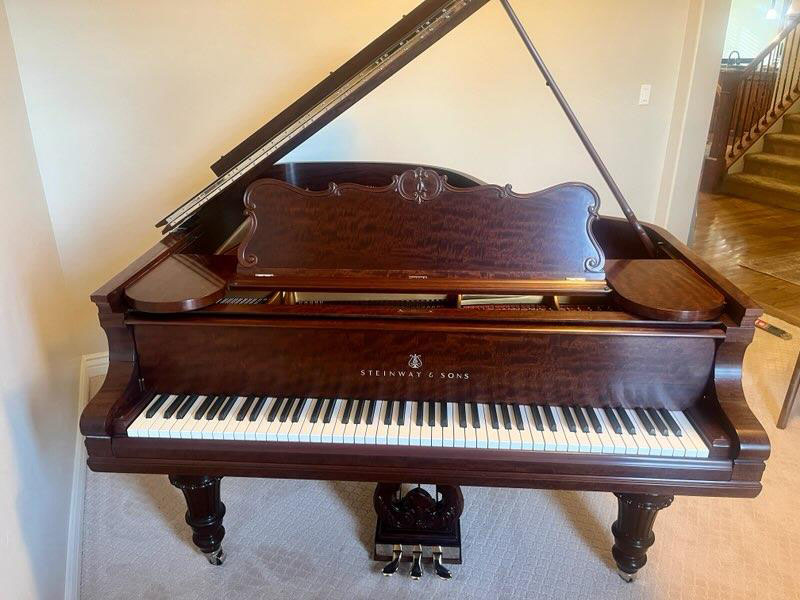
After – Steinway Model O
Case Study
See a case study featuring a recently rebuilt Steinway & Sons Piano for a community in Pocatello.
